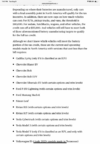Any thoughts on how this new tax credit in the bill will impact Tesla? $80,000 cap on trucks and SUV will count towards every trim of the model Y but the $55000 cap for cars screws the model 3 LR and P trims. Not sure I understand the logic behind that distinction it seems like an EV is an EV and they shouldn't really incentivize buying trucks and SUV over sedans like that. My first instinct was that Elon needs to make the base price of the dual motor and performance model 3 $54,999 then charge $3k and $8k respectively to unlock some feature after purchase like autopilot or the second motor. If I had a RWD on order right now with a late 2022 delivery date I'd be doing everything I could to push it back. Obviously things could change a bit before it is finally signed...
Here are the main bullet points from the Elektrek article which claims to have had a lawyer look at the bill.

 electrek.co
electrek.co
New Vehicle Credit
Used Vehicle Credit
Here are the main bullet points from the Elektrek article which claims to have had a lawyer look at the bill.

Senate moves forward with EV tax credit reform; Tesla (TSLA) to be included back and more
The US Senate is going to move forward with a sweeping new bill after Senator Joe Manchin finally accepted to...
 electrek.co
electrek.co
New Vehicle Credit
- Manufacturer caps eliminated. (Page 370, line 15)
- Credit applies for vehicles purchased beginning January 1, 2023. (Page 386, line 1).
- Transition provision for EVs with written sales orders dated in 2022 prior to the date of President signing the bill but delivered in 2023 allows purchaser to claim the “old” credit in 2023. (Page 386, line 20).
- Vehicle must be assembled in North America to qualify for new credit. (Page 366, line 15).
- North American assembly requirement applies to vehicles sold after the date of adoption of the bill. (Page 386, line 3)
- $7,500 credit is broke into two binary pieces meaning the vehicle either qualifies for each piece of the credit or it doesn’t. No longer based on size of battery. (Page 366, line 6)
- $3,750 of the new credit is based upon the vehicle having at least 40% of its battery critical minerals from the United States or countries with a free trade agreement with the United States. This is a list of countries with free trade agreements with the US.(Page 371)
- The other $3,750 of the new credit is based on at least 50% of the battery components of the vehicle coming from the United States or countries with a free trade agreement with the US. (Page 372, line 13)
- The 40% minerals requirement increases to 50% in 2024, 60% in 2025, 70% in 2026 and 80% in 2027. (page 371 line 23)
- The 50% battery components requirement increases to 60% in 2024, 70% in 2026, 80% in 2027, 90% in 2028 and 100% in 2029. (Page line 373)
- The government has until the end of the year to develop guidance on the battery requirements. (Page 374)
- Beginning in 2025, any vehicle with battery minerals or components from a foreign entity of concern are excluded from the tax credit. (Page 374, line 20).
- One credit per vehicle. (Page 375, line 12)
- Modified gross income limit of $150k for individuals, $225k for head of household, and $300k for joint returns. Definition of MAGI (page 375, line 22)
- MSRP of vehicle must be $80k or less for SUVs, Vans and Trucks. $55k for all other vehicles. (Page 377, line 4)
- Dealer can apply credit at time of sale. Dealer must disclose to buyer the MSRP of the vehicle, the applicable tax credit amount and the amount of any other available incentive applicable to the purchase. (Page 378, line 6)
- Credit terminates December 31, 2032.
Used Vehicle Credit
- Tax credit of 30% of value of used EV with $4,000 cap (Page 387, line 23).
- Used vehicle must be at least two model years old at time of sale. (Page 389, line 7).
- The original use of the vehicle must have occurred with an individual other than the one claiming the used tax credit. (Page 389, line 10).
- Used vehicle must be purchased from a dealer. (Page 390, line 3).
- Used vehicle price must be $25k or less. (Page 390, line 5).
- Used vehicle qualifies for tax credit only once in its lifetime. (Page 390, line 7)
- Purchaser must be an individual (no businesses) to qualify for used credit. (Page 390, line 14).
- Purchaser may only claim one used vehicle credit per three years. (Page 390, line 20).
- Modified gross income cap of $75k for individuals, $112,500 for head of household and $150k for joint returns. (Page 388).
- Credit may be applied at time of sale by dealer. (Page 391, line 15).
- Credit terminates on December 31, 2032. (Page 391, line 12).





